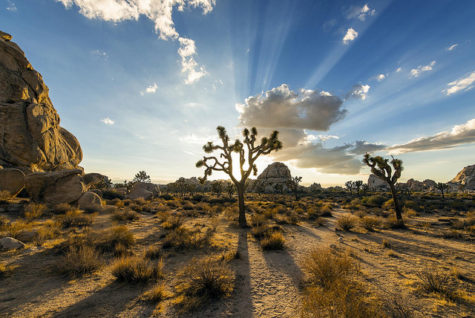
I’m a little bit low on perspective right now, so I’m checking back in with the trees for some resilience inspiration. This post first appeared in 2018.
There’s a quote I’ve seen attributed to Ram Dass about why we should turn people into trees. When we look at people (or ourselves), we judge. We compare. We criticize. But for trees, Ram Dass says, it’s different. “Some of them are bent, and some of them are straight, and some of them are evergreens, and some of them are whatever. And you look at the tree and you allow it. You appreciate it. You see why it is the way it is. You sort of understand that it didn’t get enough light, and so it turned that way.”
That’s what I look for, the whatever in trees. The more whatever the better. The wind-swept bristlecone pine that thrives in its gnarliness at the highest elevations. The rainbow eucalyptus, with colors you can see once the bark starts peeling off. The Moreton Bay Fig Tree next to the playground, which has huge roots and crannies that are equal to any climbing structure.
Last weekend it was Joshua trees. These spiky plants have few clusters of branches—some have none at all—leaving the ones they have to take on the burden of arms. They reach out, they point the way, they perform sun salutations. They shrug. The Mormons noticed: the story goes that 19th century pioneers gave the tree its name because of its resemblance to the biblical Joshua, extending his arms in prayer.
These evergreens look even more unusual against the backdrop of the Mojave Desert. Blue sky, sand-colored boulders, the craggy trees standing around, giving each other enough personal space to take in the view, for us to take them in. They have no tree rings; we guess at their ages based on their height.
Making more Joshua trees is a finely tuned affair. They must bloom—it doesn’t happen all the time, and may involve the precise combination of precipitation and a winter freeze. Then there is the yucca moth, essential to pollination. As a person, the Joshua tree would need to chart her basal temperature, calculate the ovulation window. Perhaps she would require scented candles. When she lit the candles, they might smell like rain.
Or maybe she wouldn’t need any of this when it came down to it. They can re-sprout after the main tree has been wiped out by fire or flood. They weather extreme heat and cold, months of drought and then a five-inch downpour. They can live for more than 150 years. Some may live far longer.
And so much about them is still unknown. Researchers writing in PLOS ONE thought that warmer climate may have caused a peak bloom of Joshua trees across its range in 2013, and found that increased temperatures did boost reproduction at the sites they studied. But the bloom was so widespread, with trees flowering in urban settings well outside their normal range, that the scientists think climate wasn’t the only thing that triggered the floral explosion.
It’s certainly easier to see both the forest and the trees here. Each one with its pincushion personality, the group of them united in their daily, yearly, decadal survival—maybe even communicating in a way we don’t yet see. It’s so much harder with people. I rarely notice the poor soil, the past deluges, the invisible messages in a language I don’t recognize. But there are the arms, doing what arms do, with so many fewer spikes. There is the whatever, making its daily attempt at survival. I’ll imagine the desert behind this mobile, two-legged tree so I can see it better.
*
Image by Christopher Michel, Flickr/Creative Commons license
One thought on “Redux: Whatever Trees”
Comments are closed.